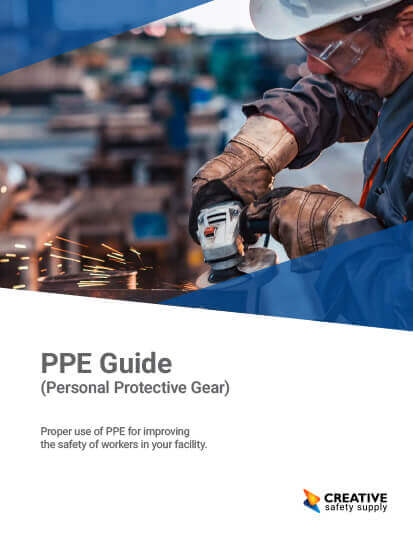
Every day your employees are using various types of equipment and chemicals while performing a range of tasks that have the potential to cause them, or those around them, harm. To improve health and safety measures and achieve a safer work environment every day, being able to identify hazards will allow action to be taken and thus improvements to be made.
Of course, every business is different, but often the hazards faced by each are similar. Whether you operate in an office block or are continually working on a different building site, establishing the risks and ensuring everyone on the premises is acting accordingly can keep health hazards at bay.
Who Is Responsible For Health Hazards?
Safety is a number one priority and business owners, managers, and employers all reap the benefits of following safety protocols. Although health and safety responsibilities are a legal requirement, everyone else within an organization must also be aware of any new practices or given instructions on the processes which are to be followed.
Many businesses choose to appoint a safety manager on site who takes charge of safety and is there to look out for any health hazards. This employee will have a more advanced skill set and will undergo thorough training which they can use to educate and manage other employees within the organization. When introducing any new changes, they can make sure everyone knows what is happening and communicate accordingly, highlighting the health risks which could arise if the process is not followed closely.
Common Health Hazards To Address
Electrical Hazards
Electrical injuries can be some of the most life-threatening in a workplace, having the potential to cause life-changing injuries or even death within an instant. Whether this is from malfunctioning equipment or live wires, often shocks occur with no warning so preparing for them in advance can prevent catastrophic incidents.
To prevent electrical hazards, all electrical equipment should be installed and maintained by industry professionals to ensure it is done so in line with national legislation. Ongoing electrical checks should be made to look out for any issues and any damaged appliances should be dealt with immediately.
Chemical Hazards
A chemical hazard is present around products such as cleaning aids, industrial chemicals, gasoline, and any other liquids which have the potential to cause harm. Each business will have differing levels of threats when it comes to chemical hazards but poor management of these products can lead to burns, blindness, and severe irritation.
To prevent chemical injuries in the workplace, all dangerous chemicals must be safely stored in assigned cupboards which are either locked or only accessible to trained employees. Anyone who is permitted to handle these should be provided with suitable PPE and must be aware of how to safely dispose of the chemicals.
Falling Hazards
Referring to both the risk of people falling from height as well as objects falling from heights, these hazards are present in many workplaces and can lead to life-changing injuries. Whether in a workshop where the shelves are stacked high or a building site that sees workers on high roofs and platforms, putting safety measures in place minimizes the hazard as much as possible.
Any ladders or scaffolding on the site need to be secured well and only scaled by those who have been trained to do so. Height safety equipment is paramount and this should be regularly inspected to guarantee it is fit for purpose. Having strict safety guidelines in place and regularly training all staff members will ensure the hazard is kept at bay.
Fire Hazards
No workplace is exempt from fire hazards and we are all aware of the consequences that could occur if a fire was to break out. Most commonly, a fire starts from faulty machinery, wiring issues, or human error, and often the issue can escalate in a flash.
Every workplace must have fire extinguishers that are accessible in all areas and regularly maintained to ensure they are fit for use. All flammable materials on business grounds should be handled accordingly and only be used by authorized personnel.
Biological Hazards
A biological hazard refers to anything that is transmitted from a living organism, whether this is another human, animal, or plant. Especially in workplaces such as hospitals, research laboratories, and animal clinics, the risk of biological hazards arises from transmittable actions such as contact with bodily fluids, insect bites, airborne viruses, and bacteria.
To prevent biological injuries, a sanitary workplace is essential and all of the appropriate disinfection procedures should be strictly followed to ensure any hazards are removed. Any biological waste must be disposed of appropriately and measures must be taken to avoid cross-contamination at all times. All employees should be familiar with the processes and again, only trained workers should be able to handle any biological hazards.


